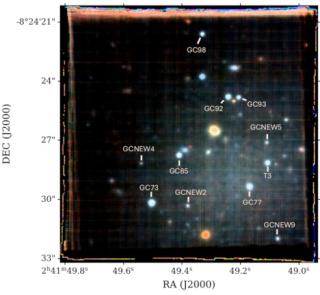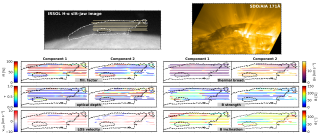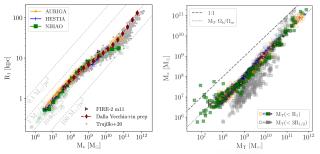The quiet Sun (the 99%, or more, of the solar surface not covered by sunspots or active regions) is receiving increased attention in recent years; its role on the global magnetism and its complexity are being increasingly recognised. A picture of a rather stochastic quiet Sun magnetism is emerging . From these recent works, the quiet Sun magnetism is presented as a myriad of magnetic field vectors having an isotropical distribution with a cascade of scales down to the mean free path of the photon (1 marcsec, or 10km on the solar surface). But this chaotic representation also shows clear signs of intermittency: at a low frequency rate (0.022 events h-1 arcsec-2) the magnetic field appear in the quiet Sun forming well-organised loop structures at granular scales. Right figure shows an example of such small-scale loop (1 arcsec, or 1000 km on the solar surface). We cas see as it is formed by a myriad of nested field lines forming a spartial (and temporal) coherent structure. More interesting, these loops rise to higher layers (see left figure) and their energy input into the chromosphere can be important for the heating of this layer.
Advertised on
References
(2010)The Astrophysical Journal Letters, Volume 714, Issue 2, pp. L94-97
It may interest you
-
 O ne of the key challenges in astronomy is to measure accurate distances to celestial objects. Knowing distances is crucial since it allows us to measure physical properties such as size, mass and luminosity. Since we can’t go out and use a tape-measure, a range of different approaches have been developed. Many of these approaches rely on using “standard candles”. Standard candles are objects (for example stars or supernovae) for which we know their intrinsic ”true” brightness. Once we know this, then their observed brightness compared to their intrinsic brightness gives us a distance to theAdvertised on
O ne of the key challenges in astronomy is to measure accurate distances to celestial objects. Knowing distances is crucial since it allows us to measure physical properties such as size, mass and luminosity. Since we can’t go out and use a tape-measure, a range of different approaches have been developed. Many of these approaches rely on using “standard candles”. Standard candles are objects (for example stars or supernovae) for which we know their intrinsic ”true” brightness. Once we know this, then their observed brightness compared to their intrinsic brightness gives us a distance to theAdvertised on -
 Understanding the magnetic field in the corona is key for explaining the fascinating physical processes occurring there. However, the extreme conditions in the outer solar atmosphere hamper the possibility of acquiring observations with enough quality to infer the coronal magnetic field. Analyzing observations of overdensities of cold plasma supported by coronal magnetic fields, including filaments and prominences, allows us to understand such magnetic fields and their interaction with plasma. In this study, we have analyzed an active region prominence, a type of prominence that has barelyAdvertised on
Understanding the magnetic field in the corona is key for explaining the fascinating physical processes occurring there. However, the extreme conditions in the outer solar atmosphere hamper the possibility of acquiring observations with enough quality to infer the coronal magnetic field. Analyzing observations of overdensities of cold plasma supported by coronal magnetic fields, including filaments and prominences, allows us to understand such magnetic fields and their interaction with plasma. In this study, we have analyzed an active region prominence, a type of prominence that has barelyAdvertised on -
 Measuring galaxy sizes is essential for understanding how they were formed and evolved across time. However, traditional methods based on l ight concentration or isophotal densities often lack a clear physical meaning. A recent study from Trujillo+20 explores a more physically motivated definition: the radius R 1, where the stellar surface density falls to 1 solar masses per parsec square —roughly the threshold for gas to form stars in galaxies like the Milky Way. In this work, Arjona-Gálvez+25 uses over 1,000 galaxies from several state-of-the-art cosmological simulations (AURIGA, HESTIAAdvertised on
Measuring galaxy sizes is essential for understanding how they were formed and evolved across time. However, traditional methods based on l ight concentration or isophotal densities often lack a clear physical meaning. A recent study from Trujillo+20 explores a more physically motivated definition: the radius R 1, where the stellar surface density falls to 1 solar masses per parsec square —roughly the threshold for gas to form stars in galaxies like the Milky Way. In this work, Arjona-Gálvez+25 uses over 1,000 galaxies from several state-of-the-art cosmological simulations (AURIGA, HESTIAAdvertised on